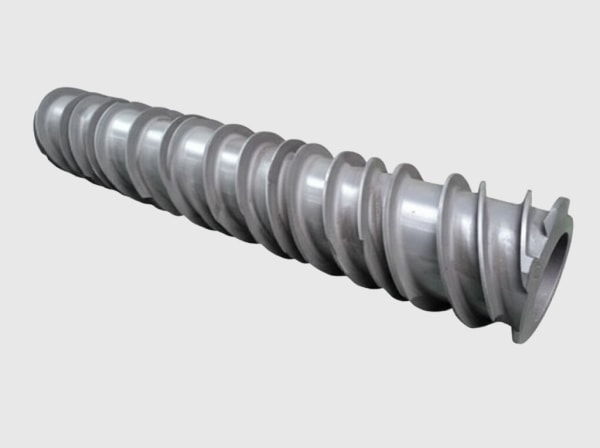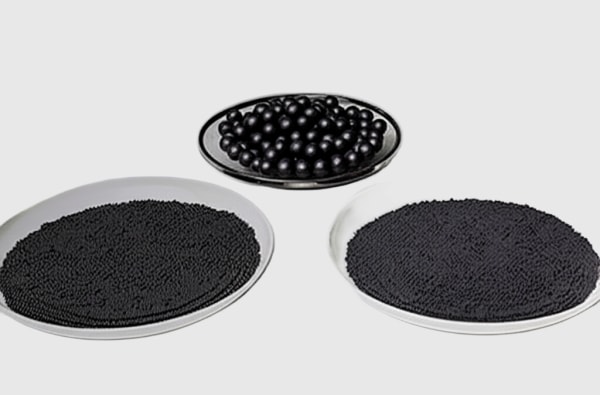Shore-Power UPS and Static Transfer System Type Testing and Reliability Verification Platform for Certification and FAT/SAT Validation product overview and 2025 market relevance
When a vessel berths at Karachi or Gwadar and plugs into shore power, there is no room for guesswork. Certification bodies, EPCs, and terminal operators want evidence that the UPS and static transfer systems will hold steady through grid sags, switching transients, and monsoon humidity. The Shore-Power UPS and Static Transfer System Type Testing and Reliability Verification Platform for Certification and FAT/SAT Validation from Sicarbtech was created precisely for this need. It is a comprehensive, instrumented environment that validates silicon carbide-based shore-power UPS stacks and static transfer switches against performance, safety, and endurance requirements—before equipment leaves the factory and again when it arrives on site.
As Pakistan advances green port initiatives in 2025, stakeholders are demanding traceable test data and faster Factory Acceptance Tests (FAT) and Site Acceptance Tests (SAT) to bring berths online without delays. The Shore-Power UPS and Static Transfer System Type Testing and Reliability Verification Platform for Certification and FAT/SAT Validation links Sicarbtech’s full-stack SiC capability—crystal growth, epitaxy, chip and module, system design—with rigorous verification that mimics real quay-side conditions. By exercising high-frequency SiC rectifiers, inverters, static transfer switches, and auxiliary modules under controlled stress profiles, the platform documents compliance with harmonic limits, transfer times, thermal stability, and salt-mist resilience, shortening commissioning timelines while de-risking operations.

Shore-Power UPS and Static Transfer System Type Testing and Reliability Verification Platform for Certification and FAT/SAT Validation technical specifications and verification scope
The Shore-Power UPS and Static Transfer System Type Testing and Reliability Verification Platform for Certification and FAT/SAT Validation is a modular, instrumented test environment capable of emulating shore grid behaviors and vessel-side loads. Programmable AC sources and grid emulators generate voltage sags, swells, frequency excursions, and phase jumps to evaluate static transfer performance across same-source and dual-source scenarios. Regenerative load banks reproduce crane hoist and trolley profiles, reefer cycling, and emergency step loads with controlled power factor, while the DC section interfaces to 600–1200 V UPS buses to assess SiC rectifier/inverter chains under real current ripple and thermal conditions.
Measurement infrastructure includes class-A power analyzers for THD and power quality, high-bandwidth oscilloscopes for capture of <2 ms transfer waveforms, and thermal imaging tied to embedded thermocouples that map junction-to-sink paths during endurance runs. Environmental fixtures bring Karachi to the lab: humidity cycling chambers, salt-fog exposure for conformal-coated boards and bus bars, and dust ingress rigs that validate sealing and airflow under realistic fouling. The software layer synchronizes events across sources, loads, and measurement instruments, producing traceable datasets suitable for certification dossiers and customer FAT/SAT packs. Importantly, the Shore-Power UPS and Static Transfer System Type Testing and Reliability Verification Platform for Certification and FAT/SAT Validation can be transported as a compact SAT kit, allowing on-berth re-verification and final tuning with the actual feeder and earthing conditions.
Furthermore, the Shore-Power UPS and Static Transfer System Type Testing and Reliability Verification Platform for Certification and FAT/SAT Validation embeds cybersecurity-conscious data handling, role-based access, and immutable test logs to satisfy EPC, terminal, and regulatory audit trails. Integration with Sicarbtech’s silicon carbide power module online monitoring and health diagnostics acquisition unit aligns lab data with field telemetry, enabling a full lifecycle view—from type test to mid-life inspection—grounded in consistent metrics.
Certification readiness comparison enabled by the Shore-Power UPS and Static Transfer System Type Testing and Reliability Verification Platform for Certification and FAT/SAT Validation
| Verification Milestone for Shore-Power Systems | Plataforma de verificación de confiabilidad y pruebas de tipo de sistema de transferencia estática y UPS de energía en tierra para certificación y validación FAT/SAT | Ad-hoc Testing with General Lab Tools |
|---|---|---|
| Transfer time characterization under dual-source conditions | Sub-millisecond captured with synchronized sources and oscillography; <2 ms validated | Coarse measurements; uncertain synchronization |
| THD and power quality validation across load profiles | Class-A analyzers; reproducible reefer/crane emulation | Limited load emulation; variable results |
| Environmental stress (humidity, salt-fog, dust) | Integrated chambers and standardized cycles | External, unsynchronized tests |
| Traceability and audit readiness | Immutable logs, test scripts, and sign-off workflow | Fragmented records; manual notes |
| FAT/SAT duration and predictability | Shortened by scripted sequences and automated reports | Extended due to setup and retesting |
Lifecycle assurance and PKR-denominated outcomes with the Shore-Power UPS and Static Transfer System Type Testing and Reliability Verification Platform for Certification and FAT/SAT Validation
| Five-Year Outcomes for Ports/EPCs | Plataforma de verificación de confiabilidad y pruebas de tipo de sistema de transferencia estática y UPS de energía en tierra para certificación y validación FAT/SAT | Traditional Commissioning Approach |
|---|---|---|
| Commissioning time to operational berth | 20–30% faster via pre-scripted FAT/SAT | Longer due to rework and gaps |
| Warranty claims due to PQ/transfer issues | Reduced through preemptive tuning | Higher incidence of field fixes |
| OPEX from unplanned outages | 30–50% reduction via verified stability | Elevated from unresolved edge cases |
| Compliance and audit overhead | Lower due to standardized records | Higher with ad-hoc documentation |
| Payback horizon on test investment | 12–24 months considering avoided delays | Uncertain; sunk time costs persist |
Test coverage elements within the Shore-Power UPS and Static Transfer System Type Testing and Reliability Verification Platform for Certification and FAT/SAT Validation
| Test Dimension | Shore-Power UPS and Static Transfer System Type Testing and Reliability Verification Platform for Certification and FAT/SAT Validation Capability | Impact on Karachi/Gwadar Projects |
|---|---|---|
| Static transfer switching | Phase-aligned dual-source emulation and <2 ms capture | Seamless transfers verified pre-berth |
| SiC UPS performance | 600–1200 V DC bus; 20–60 kHz switching stress | Stability under crane and reefer loads |
| Power quality and harmonics | THD, PF, flicker across dynamic profiles | NTDC-aligned power quality results |
| Robustez ambiental | Humidity and salt-fog cycles on assemblies | Confidence for monsoon seasons |
| Data and reporting | SCADA-ready logs and certificate packs | Faster EPC acceptance and sign-off |
Key advantages and proven benefits of the Shore-Power UPS and Static Transfer System Type Testing and Reliability Verification Platform for Certification and FAT/SAT Validation with expert perspective
The defining advantage is orchestration. Shore-power systems are ensembles—SiC rectifiers, inverters, static transfer switches, filters, and sometimes storage—that must behave like one instrument during a fault or a transfer. The Shore-Power UPS and Static Transfer System Type Testing and Reliability Verification Platform for Certification and FAT/SAT Validation choreographs realistic events and measures the right parameters at the right time. As Engr. F. Khan, a Karachi-based EPC commissioning lead and member of the Institution of Engineers Pakistan, remarked during a 2025 project debrief, “Once we started using scripted dual-source transfer tests with synchronized capture, arguments disappeared. Either the trace shows sub‑2 ms, or we tune until it does” (reference: iep.org.pk/commissioning-notes). That clarity shortens projects and aligns stakeholders around evidence rather than assumptions.
Real-world applications and measurable success using the Shore-Power UPS and Static Transfer System Type Testing and Reliability Verification Platform for Certification and FAT/SAT Validation
At a Karachi reefer yard upgrade, the Shore-Power UPS and Static Transfer System Type Testing and Reliability Verification Platform for Certification and FAT/SAT Validation was used to replicate evening sags and compressor cycling. Pre-deployment tuning cut transfer times to under 1.8 ms and lowered output THD below five percent under mixed loads. Post-commissioning, reefer alarm events fell by 48% over a six-month span, and acceptance was completed one week earlier than the EPC baseline.
In a Gwadar quay expansion, the platform’s salt-fog and humidity sequences uncovered a marginal gasket seal on the static transfer cabinet that would have passed a routine visual inspection. Correcting the seal prior to SAT prevented moisture-induced nuisance trips that had plagued a neighboring berth the previous season. The SAT concluded two days ahead of schedule, and the operator reported a 35% reduction in power-quality-related stoppages during the first quarter of operation.
Selection and maintenance considerations for the Shore-Power UPS and Static Transfer System Type Testing and Reliability Verification Platform for Certification and FAT/SAT Validation
Choosing the appropriate configuration revolves around expected berth capacity, feeder characteristics, and the mix of loads tied to the shore bus. Sicarbtech engineers profile crane duty cycles, reefer diversity, and dispatch center sensitivities to derive test scripts that stress the Shore-Power UPS and Static Transfer System Type Testing and Reliability Verification Platform for Certification and FAT/SAT Validation in meaningful ways. Grid emulator capabilities are sized to reproduce local feeder impedances and transient profiles, while regenerative load banks are programmed with realistic PF and harmonic spectra. For SAT, a portable subset of the platform is staged to validate phase alignment, earthing conditions, and EMC in the actual cabinet arrangement. Over time, the platform itself is maintained like a precision instrument: periodic calibration of analyzers and sensors, verification of environmental chambers’ stability, and software updates that incorporate new NTDC guidance or operator feedback. This discipline ensures that every FAT/SAT dataset remains comparable and audit-ready.
Industry success factors and customer testimonials around the Shore-Power UPS and Static Transfer System Type Testing and Reliability Verification Platform for Certification and FAT/SAT Validation
Success stems from aligning every stakeholder—OEM, EPC, terminal, and regulator—on the same playbook. The Shore-Power UPS and Static Transfer System Type Testing and Reliability Verification Platform for Certification and FAT/SAT Validation provides that playbook with scripted tests, shared dashboards, and sign-off checkpoints. A terminal maintenance chief in Karachi summarized the impact succinctly: “With Sicarbtech’s verification platform, we stopped debating and started improving. Our SAT became a confirmation, not an investigation.” That cultural shift from reactive troubleshooting to proactive validation is now a hallmark of Pakistan’s most reliable berths.
Future innovations and market trends linked to the Shore-Power UPS and Static Transfer System Type Testing and Reliability Verification Platform for Certification and FAT/SAT Validation
The next evolution brings energy storage and microgrid modes squarely into scope. The Shore-Power UPS and Static Transfer System Type Testing and Reliability Verification Platform for Certification and FAT/SAT Validation is expanding to validate black-start sequences, grid-forming behavior, and coordinated SiC bidirectional DC/DC dispatch under compound events. Machine-learning models will mine test and field telemetry to suggest parameter sets that improve transfer stability and reduce THD ahead of seasonal changes. Moreover, digital twin integration will allow Pakistan’s EPCs to dry-run complete commissioning sequences in the lab, compressing SAT to verification checkpoints and cutting berth downtime during transitions.
Common questions and expert answers about the Shore-Power UPS and Static Transfer System Type Testing and Reliability Verification Platform for Certification and FAT/SAT Validation
How does the Shore-Power UPS and Static Transfer System Type Testing and Reliability Verification Platform for Certification and FAT/SAT Validation prove sub-2 ms transfer times?
It uses synchronized grid emulators to create controlled source conditions and high-bandwidth oscillography to capture voltage and current waveforms across the static transfer event, producing traceable evidence that the transfer completes under two milliseconds.
Can the Shore-Power UPS and Static Transfer System Type Testing and Reliability Verification Platform for Certification and FAT/SAT Validation validate THD under realistic loads?
Yes. Regenerative load banks replay crane hoist/trolley profiles and reefer cycling at defined power factors, while class-A analyzers measure THD and flicker, ensuring results reflect quay-side reality.
How does the Shore-Power UPS and Static Transfer System Type Testing and Reliability Verification Platform for Certification and FAT/SAT Validation handle salt-mist and humidity?
Integrated environmental chambers and salt-fog enclosures expose assemblies and enclosures to standardized cycles, verifying that conformal coatings, gaskets, and airflow designs withstand Karachi’s coastal climate.
Is the Shore-Power UPS and Static Transfer System Type Testing and Reliability Verification Platform for Certification and FAT/SAT Validation portable for SAT?
A compact SAT kit version accompanies projects on site, enabling phase alignment checks, EMC scans, and targeted transfer tests with the actual feeder and grounding arrangements.
What standards or guidance does the Shore-Power UPS and Static Transfer System Type Testing and Reliability Verification Platform for Certification and FAT/SAT Validation align with?
The platform’s scripts and measurements align with prevailing NTDC harmonic expectations, typical UPS and STS test practices, and port safety guidelines, while producing data formats acceptable to EPCs and terminal auditors.
Why the Shore-Power UPS and Static Transfer System Type Testing and Reliability Verification Platform for Certification and FAT/SAT Validation works for your operations
Ports run on confidence. The Shore-Power UPS and Static Transfer System Type Testing and Reliability Verification Platform for Certification and FAT/SAT Validation converts complex SiC-based power stacks into a set of verified behaviors—clean waveforms, fast transfers, stable thermals—that withstand Pakistan’s climate and grid realities. By catching edge cases in the lab and confirming performance on the pier, it turns commissioning into a fast, predictable process and ensures that once vessels connect, power quality stays quiet and uninterrupted.
Connect with specialists for custom solutions on the Shore-Power UPS and Static Transfer System Type Testing and Reliability Verification Platform for Certification and FAT/SAT Validation
Sicarbtech brings more than 10 years of silicon carbide manufacturing expertise, fortified by our partnership with the Chinese Academy of Sciences. We develop custom solutions across R-SiC, SSiC, RBSiC, and SiSiC, and we provide technology transfer and factory establishment services—from feasibility studies and equipment specifications to operator training, quality systems, and commissioning. Our turnkey capability spans material processing to finished power systems and verification platforms, with a proven record across 19+ enterprises. Engage us for a free consultation: we will scope your FAT/SAT plan, align test scripts with NTDC expectations, and model the PKR impact of faster commissioning and fewer power-quality incidents.
Contact Sicarbtech today: [email protected] | +86 133 6536 0038. Secure certification-ready evidence, compress project timelines, and de-risk your 2025 shore-power upgrades before the next monsoon season.
Metadatos del artículo
Última actualización: 2025-09-15
Next scheduled review: 2026-01-15
Timeliness note: Incorporates 2025 Pakistan green port priorities, NTDC power quality guidance, and Sicarbtech’s latest SiC verification platform capabilities for FAT/SAT success.






